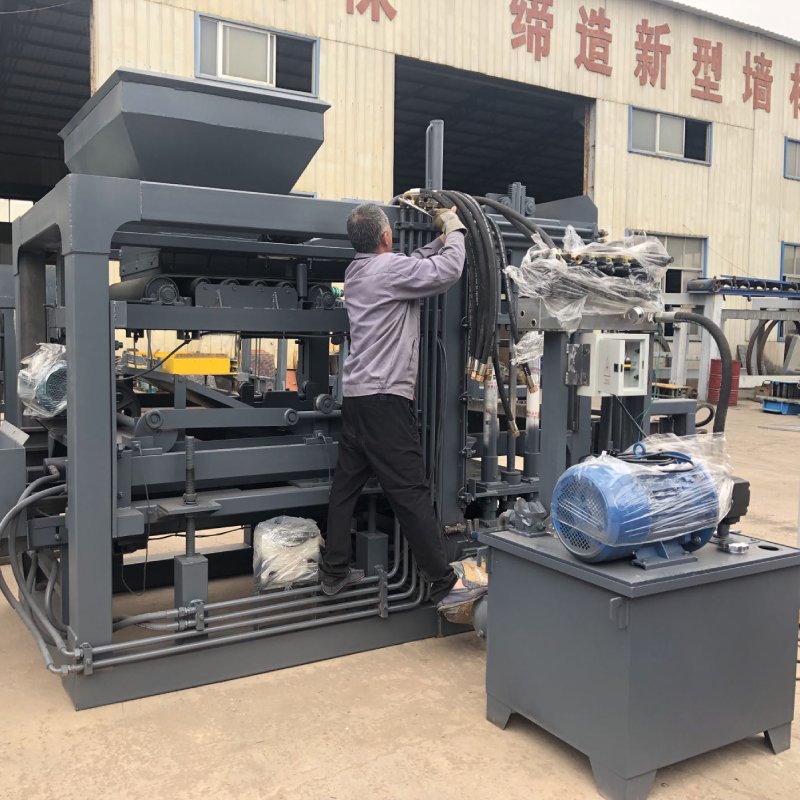
Image source Aiwei Block Machine
Digitalization and IoT Integration in Brick and Block Production
Introduction
The construction industry, often viewed as slow to embrace technological advancements, is experiencing a digital revolution. Brick and block production, a crucial aspect of construction, has evolved significantly from labor-intensive methods to highly automated and digitally controlled processes. Digitalization and IoT integration in this domain are driving innovation, reducing waste, and improving the quality and sustainability of construction materials.
The Traditional Challenges in Brick and Block Production
Manual Labor and Inefficiency
Historically, brick and block production heavily relied on manual labor. Workers would mold, shape, and stack bricks and blocks, leading to slow and labor-intensive processes. Inefficient practices and inconsistencies in quality were common challenges.
Quality Control
Ensuring consistent quality in bricks and blocks was often a challenge in traditional production methods. Variations in raw materials, human error, and limited quality control measures contributed to the problem.
Environmental Impact
Traditional brick and block production methods were not environmentally friendly. High energy consumption, resource depletion, and waste generation were common issues, leading to a negative environmental footprint.
The Digitalization and IoT Revolution
Real-Time Monitoring
Digitalization and IoT integration have ushered in an era of real-time monitoring in brick and block production. Sensors and cameras are embedded in machinery to continuously monitor critical parameters such as temperature, pressure, and production speed. This real-time data is transmitted to a central control system, enabling operators to identify and address issues promptly, reducing downtime and optimizing production.
Predictive Maintenance
IoT-enabled machinery offers predictive maintenance capabilities. By analyzing data and wear patterns, these machines can predict when maintenance is required. This proactive approach minimizes unexpected breakdowns, reducing production disruptions and repair costs.
Data-Driven Decision Making
Digitalization and IoT integration provide access to a wealth of data. Analytics and machine learning algorithms can analyze this data to make informed decisions. For example, algorithms can optimize production schedules, resource allocation, and material usage, further enhancing efficiency.
Remote Monitoring and Control
Digitalization allows for remote monitoring and control of brick and block production facilities. Operators can access real-time data and make adjustments from anywhere with an internet connection, improving operational flexibility and responsiveness.
Benefits of Digitalization and IoT in Brick and Block Production
Enhanced Efficiency
One of the most significant benefits of digitalization and IoT integration is enhanced production efficiency. These technologies reduce manual labor, improve resource utilization, and optimize production processes. As a result, production rates increase, and operational costs decrease.
Quality Control
Digitalization and IoT systems provide precise control over every stage of production, ensuring consistent quality in bricks and blocks. Sensors and cameras can detect defects and deviations from quality standards in real-time, allowing for immediate corrective actions.
Sustainability
Digitalization and IoT are contributing to the sustainability of brick and block production. Optimized resource usage, energy-efficient processes, and reduced waste generation lead to a lower environmental impact. Manufacturers can also make data-driven decisions to reduce their carbon footprint further.
Labor Savings
The automation and efficiency gains from digitalization and IoT integration reduce the need for manual labor. This labor savings translates into reduced labor costs, addressing labor shortages and improving overall workforce safety.
Challenges and Considerations
Initial Investment
While the benefits of digitalization and IoT in brick and block production are significant, there is an initial investment required to implement these technologies. Manufacturers and construction companies must weigh the upfront costs against the long-term gains.
Data Security
IoT integration raises concerns about data security. With the collection and transmission of sensitive production data, there is a need for robust cybersecurity measures to protect against potential threats and breaches.
Workforce Training
Operating and maintaining digitalized and IoT-enabled machinery may require specialized training for personnel. Companies must invest in employee training to ensure safe and efficient operation.
Integration with Existing Processes
Integrating digitalization and IoT into existing brick and block production processes can be challenging. Companies must carefully plan and adapt their workflows to incorporate these technologies seamlessly. This may require changes to plant layouts and production schedules.
The Future of Digitalization and IoT in Brick and Block Production
The future of brick and block production lies in the continued adoption and advancement of digitalization and IoT technologies. As the construction industry becomes increasingly aware of the benefits these technologies offer, manufacturers are likely to invest more in research and development, resulting in even more advanced and data-driven machinery.
Conclusion
Digitalization and IoT integration are revolutionizing brick and block production, bringing unprecedented levels of efficiency, quality control, and sustainability to the construction industry. These technologies are not just improving the manufacturing process; they are redefining the way we build. As the world recognizes the urgency of environmental conservation and the need for more efficient construction practices, the adoption of digitalization and IoT becomes imperative. The benefits of enhanced efficiency, quality control, sustainability, and labor savings make digitalization and IoT in brick and block production a vital component of the industry’s future. By embracing these technologies, the construction sector can build a smarter, more sustainable, and technologically advanced future, one brick and block at a time.
